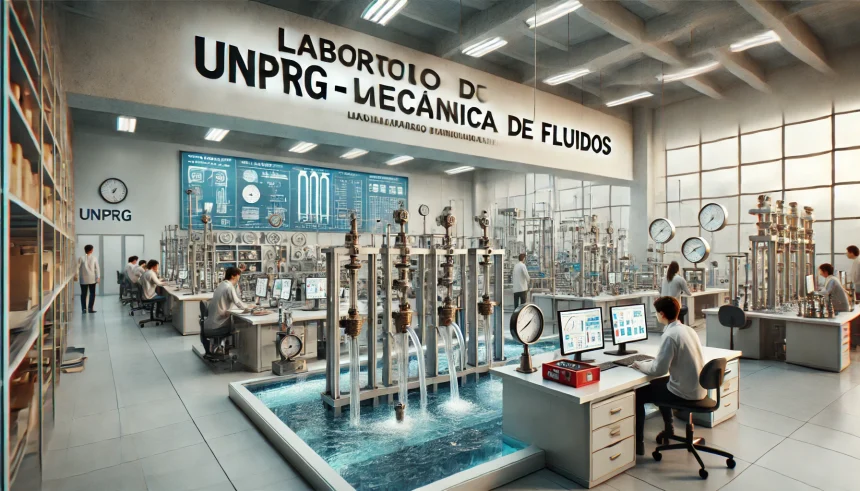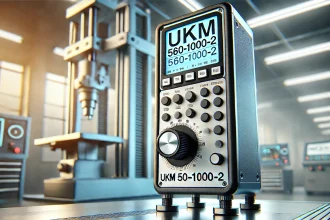The UNPRG – Laboratorio de Mecánica de Fluidos is an essential facility at the Universidad Nacional Pedro Ruiz Gallo. It serves as a learning and research space for students specializing in fluid mechanics and hydraulic engineering.
Fluid mechanics is a fundamental subject in various engineering fields. The laboratory helps students understand the principles of fluid behavior in both theoretical and practical applications.
This facility is primarily used by students from civil, mechanical, and environmental engineering programs. It allows them to conduct experiments that demonstrate real-world applications of fluid mechanics.
By using specialized equipment, students can measure flow rates, pressure variations, and fluid forces. These experiments help them grasp key engineering concepts more effectively.
The UNPRG – Laboratorio de Mecánica de Fluidos bridges the gap between academic knowledge and industry applications. It prepares students for careers in fields like water management, hydraulic infrastructure, and energy production.
Purpose and Function of the Laboratory
The laboratory’s main purpose is to provide hands-on experience in fluid mechanics. It complements classroom learning by allowing students to test theoretical principles in a controlled environment.
Students conduct various experiments related to fluid motion, pressure distribution, and energy transfer. These experiments help in understanding concepts that are difficult to visualize through lectures alone.
Many engineering projects require knowledge of fluid behavior. The UNPRG – Laboratorio de Mecánica de Fluidos helps students develop practical skills that are crucial in designing hydraulic systems, pipelines, and water treatment plants.
The laboratory is also a research hub where students and faculty explore new developments in fluid mechanics. They use advanced tools to analyze water flow, sediment transport, and turbulence in different conditions.
This hands-on learning approach improves problem-solving skills. By performing experiments, students can evaluate results, compare them with theoretical predictions, and make adjustments to improve their designs.
Facilities and Equipment
The laboratory is equipped with modern instruments that allow students to study fluid dynamics. It features experimental setups that simulate real-world hydraulic conditions.
Some of the key equipment includes:
- Hydraulic Bench – Used for general fluid mechanics experiments, including flow rate measurements.
- Current Channel – Helps study open-channel flow, weirs, and gates.
- Pipe Network System – Allows students to analyze pressure losses in pipes and fittings.
- Multimedia Projector and Whiteboard – Enhances instruction by supporting theoretical discussions with visual aids.
The facility is designed to provide a safe and effective learning environment. It has proper lighting, ventilation, and drainage systems to handle experimental setups efficiently.
Instructors ensure that all equipment is maintained in good condition. Regular calibrations and safety checks are conducted to keep the laboratory functional for student use.
The UNPRG – Laboratorio de Mecánica de Fluidos also integrates digital tools. Virtual simulations complement physical experiments, providing a more in-depth understanding of fluid behavior under different conditions.
Key Experiments and Practical Applications
Students perform a variety of experiments that demonstrate fundamental fluid mechanics concepts. These practical sessions reinforce their theoretical knowledge.
Hydrostatics is a key area of study in the lab. Students measure pressure variations in fluids and learn how forces act on submerged surfaces. This helps them understand how dams, tanks, and pipelines function.
Hydrodynamics experiments focus on fluid motion. Students analyze how water flows over obstacles, how turbulence forms, and how flow rates change with different pipe diameters.
Some of the practical applications include:
- Flow Measurement – Understanding how to measure liquid flow rates in pipelines and channels.
- Energy Loss Analysis – Studying how friction and pipe bends affect water flow.
- Hydraulic Structures – Observing how weirs, gates, and spillways manage water flow.
These experiments are vital for future engineers. They prepare students for careers in hydraulic design, water resource management, and energy production.
Educational Impact
The UNPRG – Laboratorio de Mecánica de Fluidos enhances the learning experience for students. It makes complex fluid mechanics concepts easier to grasp through direct experimentation.
By using laboratory equipment, students improve their technical skills. They learn how to set up experiments, record data, and analyze results using engineering methods.
The practical training in fluid mechanics prepares students for real-world challenges. Whether designing irrigation systems or managing wastewater treatment, they apply their laboratory knowledge to professional engineering tasks.
Teamwork and problem-solving skills are also developed. Many experiments require collaboration, encouraging students to work together, troubleshoot issues, and find the best solutions.
Ultimately, the laboratory strengthens the academic foundation of engineering students. It ensures they graduate with both theoretical knowledge and hands-on experience in fluid mechanics.
Laboratory Management and Safety Measures
A well-organized management system keeps the laboratory efficient and safe. Trained professionals oversee daily operations, ensuring that equipment is used properly.
Students are required to follow strict safety guidelines. Handling pressurized fluids and rotating equipment requires care, and instructors provide training on proper procedures.
Some key safety measures include:
- Protective Gear – Students must wear lab coats, gloves, and goggles when performing experiments.
- Equipment Maintenance – Regular checks prevent malfunctions and ensure accurate results.
- Emergency Protocols – The lab is equipped with fire extinguishers, first aid kits, and emergency shutdown systems.
The laboratory follows environmental guidelines for fluid disposal. Used water is treated and recycled whenever possible to minimize waste.
These safety and management procedures ensure that the UNPRG – Laboratorio de Mecánica de Fluidos operates efficiently while providing a secure learning environment.
Future Developments and Technological Advancements
The laboratory is continuously evolving to keep up with new advancements in fluid mechanics. Efforts are being made to introduce more digital tools and automated systems.
One of the future plans is to integrate advanced simulation software. This will allow students to analyze fluid behavior in complex systems without physical limitations.
Collaborations with industries and research institutions are also being explored. These partnerships can provide funding for new equipment and research projects.
Sustainable technology is another focus. The UNPRG – Laboratorio de Mecánica de Fluidos aims to incorporate renewable energy concepts, such as hydroelectric power experiments, into its curriculum.
With continuous improvement, the laboratory will remain a valuable resource for future generations of engineering students, helping them develop cutting-edge solutions for real-world challenges.
Conclusion
The UNPRG – Laboratorio de Mecánica de Fluidos is an essential part of engineering education at UNPRG. It provides students with the hands-on experience needed to master fluid mechanics concepts.
Through a combination of practical experiments and theoretical studies, students gain a deep understanding of fluid dynamics. This knowledge is crucial for various engineering applications.
The laboratory’s facilities, equipment, and expert supervision create an effective learning environment. Safety protocols and proper management ensure that students can focus on their experiments without risks.
With future advancements, the laboratory aims to integrate new technologies and enhance research opportunities. This will further improve the quality of education at UNPRG.
In summary, the UNPRG – Laboratorio de Mecánica de Fluidos plays a key role in shaping skilled engineers who are ready to tackle real-world fluid mechanics challenges.
FAQs
What is the purpose of the UNPRG – Laboratorio de Mecánica de Fluidos?
It provides hands-on training for students to understand fluid mechanics principles through experiments and practical applications.
What kind of experiments are conducted in the laboratory?
Students perform experiments on hydrostatics, fluid flow, pressure distribution, energy loss, and hydraulic structures like weirs and gates.
What equipment is available in the UNPRG – Laboratorio de Mecánica de Fluidos?
The lab has hydraulic benches, current channels, pipe networks, flow meters, and multimedia projection tools for better learning.
How does the laboratory benefit engineering students?
It enhances technical skills, reinforces theoretical knowledge, and prepares students for careers in hydraulic engineering and fluid mechanics.
Are there safety measures in place during laboratory sessions?
Yes, students follow strict safety guidelines, use protective gear, and work under supervision to ensure a secure learning environment.
















